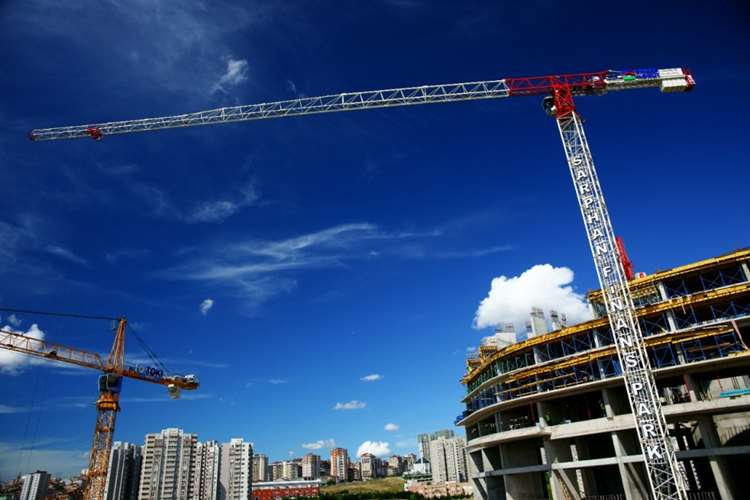

In a span of three to four decades, construction technology has undergone tremendous advancement in the use of labor, materials, and techniques.
I can vividly recall that for the construction of heavy foundations, e.g. for Urea and Ammonia foundations for a fertilizer plant, it used to take deployment of 20 to 30 concrete mixers, working day and night for 3 to 4 days continuously. In modern technology, this is a job of not more than 8 to 10 hours and qualitatively far superior.
Construction in civil engineering is a vast field, involving the construction of roads, foundations, multistoried buildings, etc. And significantly there has been tremendous advancement in all fields of construction. Roads, which used to take years for completion, now take one-fourth of the time with the use of modern techniques. In the present write-up, we confine ourselves to the construction of high-rise structures.
While for quite some time, structures up to 13 to 14 stories used to be called multistoried structures, presently the figure has changed to 30 to 32 floors on average. It is therefore a common sight these days to see concrete jungles accommodate the increased population, without much change in the ratio of the ground-covered construction area. Today for high structures to be completed in comparatively shorter time spans and without cost overruns, the use of advanced equipment as below has become a necessity:
1. Lifting devices like tower cranes and their proper positioning.
2. Using weighing batchers and concrete pumps.
3. Planning of proper formwork.
4. Use of high-grade cement, steel, and admixtures.
5. Use of proper coarse and fine aggregate, including its routine quality checks.
All high-rise structures definitely have their multilevel basements, and during construction, proper dewatering to keep the water level below the desired level needs to be arranged by positioning the required pumps for disposal of water. Post-construction of the basement, proper waterproofing of the basement raft and side retaining walls needs to be carried out.
The use of proper formwork plays an important role in the speed and quality of construction. While there are various systems in use, MIVAN formwork or TAC system formwork offer the right solutions for all areas of casting concrete, like shortening the construction period, fast form removal system with repetitions over 200 to 250 times leading to the economy in construction cost.
The sequence and its broader guidelines are briefly detailed as below:
Day 1 – Erection of vertical reinforcements and outside vertical formwork for the entire floor or part thereof.
Day 2 – Erection of another side of vertical formwork and formwork for slabs, beams, and fixing of reinforcement bars.
Day 3 – Laying of concrete using concrete pumps and tower cranes etc. for in situ casting of walls, columns, beams, and slabs in continuance operations.
Day 4 – Removal of exterior shutters for walls, columns (after 24 hours), and lifting of the same for carrying out activities for the next floor.
While slab and beams could be de-shuttered after 5 to 6 days, the beams shall require simple props at the center for a few more days.
All the above activities are considering the usage of high-grade cement having lesser setting time and use of admixtures/plasticizers to bring out workability in pouring.
Other ways to bring down the construction period are the use of precast slab units to be positioned on cast in situ beams and grouting the joints of slab and beams. Here the precast units are factory-made with steam curing enabling the units to gain the required strength in a comparatively shorter time span, and erecting the same with the tower cranes. The precast slab units are designed in segments.
For mechanical construction more of the components of the structure are fabricated in the factory with precision and only assembled in the actual construction site. Such techniques for speedy and quality construction are developed in China, and they have been able to achieve the desired results resulting in savings of time and cost.
For achieving this, the human resources at the site are aptly deployed in optimum numbers, and most of the site operations are mechanized. Such practices are more prevalent in those countries where the human labor cost is very high, e.g. USA and western countries. Here the human intervention is restricted to multi specialists list so that human errors are minimized. Now even in India where the skill levels of workers are not up to the mark, such construction is being followed in large value projects. Since fewer workers are involved and construction is more mechanized, the project completion is highly predictable.
The use of alternative materials where supplies are more predictable and are available in bulk causes the construction to be faster. Large structures like multi-level car parks made up of structural steel, use of pre-molded full toilets in factories which are just lifted by cranes and fixed in floors are other ways of faster and cost-saving techniques. Even for mass housing for workers use of gypsum board with panels made from the waste of fertilizer plants is extremely cost-effective and is very popular nowadays. When the project is over the same materials can be used for other projects by loosening the nuts and bolts.
For large projects, replacing time-consuming activities like plaster with POP-based finishes, are very fast and very economical, and cost-saving. In commercial as well as in hotel projects, the use of the frame-work of Aluminum which is sandwiched in gypsum panels to avoid brick and mortar partition walls is quite handy. Similarly, synthetic plaster on the outer surface gives not only excellent finishes but also waterproofs the external facade. For large area projects, infrastructure using precast multilayer trenches can be adopted to avoid multiple excavations and for quick maintenance.
1
2
3
4
5
6